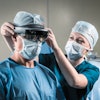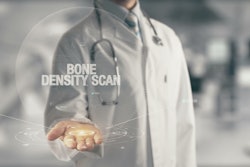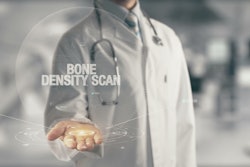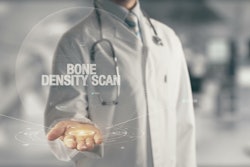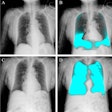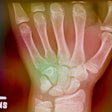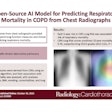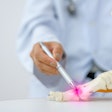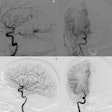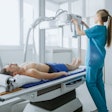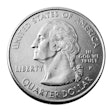Age appears not to be a factor in whether postmenopausal women with osteoporosis respond to treatment with romosozumab, according to a recent dual-energy x-ray absorptiometry (DEXA) study.
The finding is from an analysis of bone mineral density in 186 postmenopausal women between 52 and 96 years of age who were treated with romosozumab for one year, noted lead author Evelien Gielen, MD, PhD, of University Hospitals Leuven in Leuven, Belgium, and colleagues.
“Our results may help guide romosozumab use in older women in routine practice,” the group wrote. The study was published in the January 2026 issue of Bone.
Romosozumab (Evenity, Amgen) is a monoclonal antibody that stimulates bone formation while suppressing bone resorption. It is approved in the U.S. and in Europe for treating osteoporosis in postmenopausal women at high risk of fracture, including older women, but whether bone mineral density (BMD) response varies with age remains unknown, the authors wrote.
To bridge the knowledge gap, the researchers recruited 186 postmenopausal women (median age, 76 years old) with osteoporosis who were beginning a 12-month romosozumab course. Participants were enrolled at two Belgian clinics and one Italian clinic. Sixty-six participants (35%) were over 80 years old, 30 were over 85 (16%), and most had had a recent (within 2 years) major osteoporotic fracture.
At baseline, based on DEXA scans, their mean lumbar spine T-score was -2.8, mean total hip T-score was -2.4, and femoral neck T-score was -2.7. After 12 months of romosozumab, BMD increased by 9.2% at the lumbar spine and by 3% at the hip. A ≥ 3% BMD increase was observed in 80.4% of participants at the spine, 51% at the hip, and 46% at the femoral neck.
Finally, there was no significant association of these BMD responses with age, the researchers reported.
“Romosozumab was associated with large average BMD gains in both treatment-naïve and pretreated subgroups, independent of age,” the group wrote.
One strength of the study compared to previous “real-world” studies was its prospective design with multiple centers from different countries (increasing external validity) and the moderate sample size, the researchers noted.
However, they also wrote that since the study focused on BMD response in women who completed a 12-month course of the drug, adherence, persistence, or adverse effects (including fractures or cardiovascular events) were beyond the scope of the work.
Thus, larger multicenter cohort studies are clearly needed and are currently ongoing, according to the group.
“Our findings support the use of anabolic drugs like romosozumab in older adults, although further studies are needed to optimize the use in the oldest old,” the researchers concluded.
The full study is available here.



